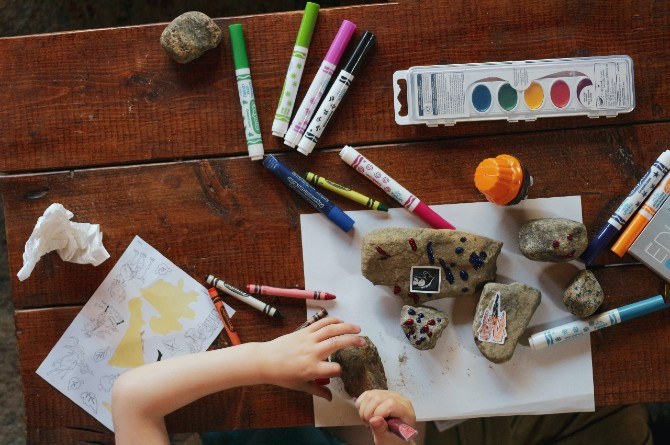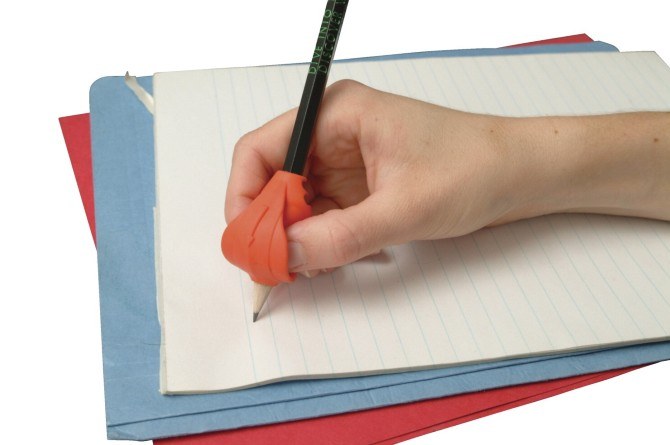Writing is pretty much the fundamental skill you need to have to learn something. But for a child who’s starting their educational journey, this just might be a difficult task.
What can you read in this article?
- How to teach pencil grip to your child?
- How to teach pencil grip to Kids in 5 ways
You see, writing, after all, is a mix of multiple movements. It requires coordination between the brain and the fingers. The eyes need to register the word or object and then reproduce the same by memory on a piece of paper.
It’s only when you break this process down, do you realize how complicated it can get. The complete process is called fine motor skills and each one of us do develop this over a period of time.
But a lot of this process starts naturally at an early age with toddlers. Right from the way you hold the pencil to how you position your hand on a piece of paper, all of it contributes to how you end up writing. And the right technique can be learned and perfected over time.
But first, you need your little one to learn this skill. Even occupational therapists check how the child is holding the pencil when they diagnose children for fine motor skills.
So, the process starts with how to teach pencil grip to your child and we tell you how you build on this.
How to teach pencil grip to your child?

Image Source: Unsplash
At two-and-a-half to three years old, your child should be able to draw horizontal and vertical lines, cut with scissors, and remove lids from small containers. all of this requires hand-eye coordination and strong finger muscles.
To encourage having a strong pencil grip, encourage your child to do the following:
- Scribble
- Play with arts and crafts
- Play with playdough
- Colouring using crayons or pencils
- Practice drawing straight lines, circles, or cross
- Play connect the dots
Once your child is able to do these activities with ease, your next target should be correcting the way they hold the pencil.
While some kids may find it easy and get the hang of it right from the word go, some kids do struggle but will come around after a few practice sessions. The important thing is that you encourage them and let them practice as often as possible.
Why children find it difficult to hold a pencil correctly?
- They’ve not been taught how to hold it correctly
- They have poor fine motor skills
- They are not familiar with the pencil’s grasp
READ MORE:
How to teach your kid to write his name
7 benefits of writing by hand and how it makes children smarter
Why your child’s handwriting still matters in the digital age
How to teach pencil grip to Kids in 5 ways

Image Source: Unsplash
1. Play with toys that have tongs
Buy your child toys that have tongs to naturally improve their finger strength.
Tongs are tweezers and require effort to use one of them. It encourages the use of the thumb, index finger, and the tiny muscles between the two fingers.
You can also let them use tweezers to have foods at home like grapes, raisins, or popcorn. This will help the children practise without becoming too conscious about it. Moreover, kids find the novelty of it fun.
You can also try teaching them to use chopsticks that uses the same principal of fine motor skills and will only help them have better control over their muscles.
2. Use smaller pencils and crayons
A genius trick to help children adapt to using a pencil is by using smaller pencils, crayons or chalk that offers a better grasp. Ideally, a smaller size pencil requires more pressure and thereby more effort from the child.
You can break the crayon or the pencil in half to enforce children to use the small-sized version. So when they do switch to regular-sized pencils, it just gets easier to get a grasp on the same.
On the bright side, you will have a spare to hand them when eventually lose this one.
At the same time, try experimenting with different types of writing utensils for optimum results. Triangle shaped pencils do help, while you can also find triangle-shaped grips that aim to fetch the same results.

Image Source: Pexels
3. Write on vertical surfaces
Writing on a vertical surface such as chalkboards, dry erase boards or even the wall helps build strength and stability.
It places the wrist in a good position for writing, thereby naturally allowing the child’s arms to control the writing pattern.
4. Focus on improving their fine motor skills
Having good handwriting requires strong control over the pencil and that comes from fine motor skills.
So, you need to concentrate on developing your child’s fine motor activities and strengthening the fingers.
Think outside the lines and let your child practice these skills beyond a pencil and paper. Let them tear paper, put puzzles together, do finger painting, and more such activities.
Try to get them to do those activities where they imitate how to hold a pencil. You can also strengthen the fingers by doing activities that require a pincer grasp.
5. Use pencil grips

Image Source: Grotto Grip
Although recommended as a last resort, pencil grips can help children learn the right technique to hold a pencil. Some occupational therapists do believe that this could help the child get past the coordination of holding the pencil correctly.
We would also recommend that you visit a doctor and particularly an occupational therapist if you think your child is finding it difficult to do simple activities.
Some children do take longer to develop these skills but there’s no harm in having them checked for potential learning disorders. Even then, children will need a bit of extra effort to learn holding the pencil right but they will do get it.
Republished with permission from theAsianparent Singapore